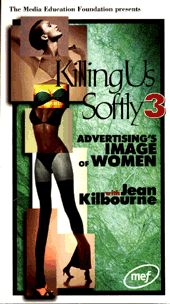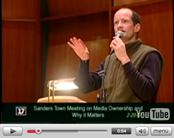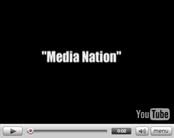Curriculum Review - Killing Us Softly

Title: Killing Us Softly 3
Creator: Media Education Foundation
Format: VHS/DVD
Ages Appropriate: Teens and older
ACME Reviewer #1
Standard #1: Is submitted curriculum FUNDED through independent means with not direct financial support from transnational media conglomerates?
Yes
Standard #2: Is submitted curriculum FREE of unexamined commercial product placements?
Yes
Standard #3: Does submitted curriculum CONTAIN supporting curricula resources-questions and answers, pre and post-viewing activities, and/or background supplemental materials for classroom and community educators?
Yes
Standard #4: Does submitted curriculum PROMOTE critical thinking skills (i.e. knowledge, comprehension, application, analysis, synthesis, evaluation) through various media literacy strategies (i.e. questioning, discussion, reflection)?
Yes
Standard #5: Does submitted curriculum FACILITATE active “hands-on” learning activities and independent media production (i.e. – writing, filmmaking, multimedia creation)?
Yes
Rationale: Examples of this are various art projects including collage, examining whole fashion magazines, creating educational videos and revised fashion magazines, visiting websites, etc.
Standard #6: Does submitted curriculum ESPOUSE media-related activism in one’s school and/or community, encouraging students to move from “passive consumer” to “active citizen”?
Yes
Rationale: Examples of this are through a variety of writing, creation of various art projects including collage, examining whole fashion magazines, creating educational videos and ethical fashion magazines.
Standard #7: Does submitted curriculum ADDRESS the positive/negative individual and societal effects – social, economic, cultural, political, psychological, spiritual, environmental – of media consumption?
Yes
Rationale: This video & related lessons focus on women’s issues as individuals and a society. It does so by examining, questioning and analyzing the cultural and psychological aspects of advertisements, whether targeted to men or women that depict images of women in stereotypical and/or unhealthy ways.
Standard #8: Does submitted curriculum EXPLORE the structural and societal implications of media’s creation, financing and distribution?
Yes, but…
Rationale: Of the three, creation, financing and distribution, it concentrates on mainly the implications of media’s creation. It doesn’t address the role that advertising plays in the financing of big media nor in its distribution. To explain the roles of advertising in these ways, the video would need to discuss the role of advertising and profit with relation to TV, radio, magazines, film, etc., and how/why advertising is a “necessary” means for corporate media’s success. The lack of this doesn’t affect the quality of this curriculum.
Standard #9: Does submitted curriculum CHALLENGE the current corporate-owned Big Media status quo?
Yes, but…
Rationale: This curriculum directly questions the implications of advertising specific to women’s issues very well; however, it needs to discuss how the power of corporate media is so tightly controlled by a few wealthy people and as a result of this, individuals like ourselves have a very small voice in changing how media gets away with the portrayal of women in advertising. The lack of this doesn’t affect the quality of this curriculum.
ACME Reviewer #2
Standard #1: Is submitted curriculum FUNDED through independent means with not direct financial support from transnational media conglomerates?
YES The major Funding for this piece is the Media Education Foundation, a non-profit organization.
Standard #2: Is submitted curriculum FREE of unexamined commercial product placements?
YES All products discussed in this curricula is examined; each has an activity to dissect and questions developed to analyze the product at hand. NO product goes undiscussed!!
Standard #3: Does submitted curriculum CONTAIN supporting curricula resources-questions and answers, pre and post-viewing activities, and/or background supplemental materials for classroom and community educators?
YES Within this curricula, the table of contents breaks down sections to fit with the video (as well as other activities) better. Each section contains questions and answers, pre and post viewing ideas and background statistics and support. For each section, an activity and questions pertaining to each idea are given to develop further critical thinking. By developing their critical thinking skills, students apply what they learn to their lives.
Standard #4: Does submitted curriculum PROMOTE critical thinking skills (i.e. knowledge, comprehension, application, analysis, synthesis, evaluation) through various media literacy strategies (i.e. questioning, discussion, reflection)?
YES Open ended questions promote deeper thinking. A combination of open ended and yes or no questions make up the q and a sections of this curricula. The questions included in this curricula strongly promote critical thinking skills using all mentioned media literacy strategies.
Standard #5: Does submitted curriculum FACILITATE active “hands-on” learning activities and independent media production (i.e. – writing, filmmaking, multimedia creation)?
YES Nearly every exercise in this curricula facilitates hands on activities. Creation of pieces by each student helps to develop an intimacy. Working with fellow students helps to build confidence among peers. Writing activities on p 33-36 promote activism and outreach to the community.
Standard #6: Does submitted curriculum ESPOUSE media-related activism in one’s school and/or community, encouraging students to move from “passive consumer” to “active citizen”?
YES By utilizing this curricula and enlightening students, educators encourage students to be more aware of the media around them; therefore, they are more active citizens.
Standard #7: Does submitted curriculum ADDRESS the positive/negative individual and societal effects – social, economic, cultural, political, psychological, spiritual, environmental – of media consumption?
YES This curricula relates media behavior to real behavior. The result is negative. A supported idea from this curricula is that the consumption of negative and degrading images of women promotes and perpetuates both negative and degrading attitudes towards women. Several societal effects addressed by this curricula are: social, cultural and psychological.
Standard #8: Does submitted curriculum EXPLORE the structural and societal implications of media’s creation, financing and distribution?
YES The proposed curricula discusses a created societal implication, specifically the male objectification of women because men create the idea of the feminine and the attitudes towards women in advertising.
Standard #9: Does submitted curriculum CHALLENGE the current corporate-owned Big Media status quo?
NO This curricula does not address Big Media.



![View your cart items []](/sites/default/modules/ecommerce/cart/images/cart_empty.png)




